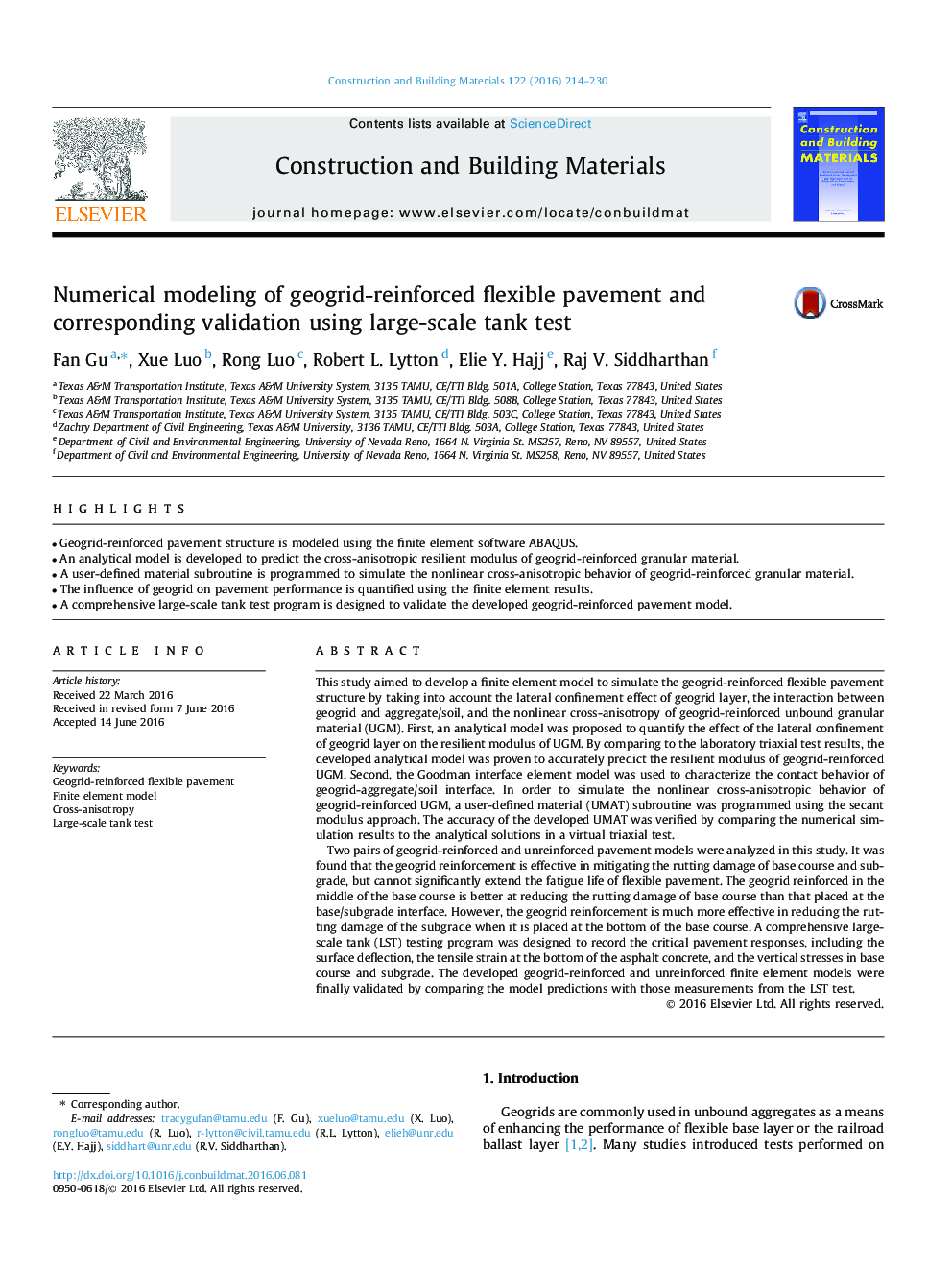| Article ID | Journal | Published Year | Pages | File Type |
|---|---|---|---|---|
| 6717958 | Construction and Building Materials | 2016 | 17 Pages |
Abstract
Two pairs of geogrid-reinforced and unreinforced pavement models were analyzed in this study. It was found that the geogrid reinforcement is effective in mitigating the rutting damage of base course and subgrade, but cannot significantly extend the fatigue life of flexible pavement. The geogrid reinforced in the middle of the base course is better at reducing the rutting damage of base course than that placed at the base/subgrade interface. However, the geogrid reinforcement is much more effective in reducing the rutting damage of the subgrade when it is placed at the bottom of the base course. A comprehensive large-scale tank (LST) testing program was designed to record the critical pavement responses, including the surface deflection, the tensile strain at the bottom of the asphalt concrete, and the vertical stresses in base course and subgrade. The developed geogrid-reinforced and unreinforced finite element models were finally validated by comparing the model predictions with those measurements from the LST test.
Keywords
Related Topics
Physical Sciences and Engineering
Engineering
Civil and Structural Engineering
Authors
Fan Gu, Xue Luo, Rong Luo, Robert L. Lytton, Elie Y. Hajj, Raj V. Siddharthan,
